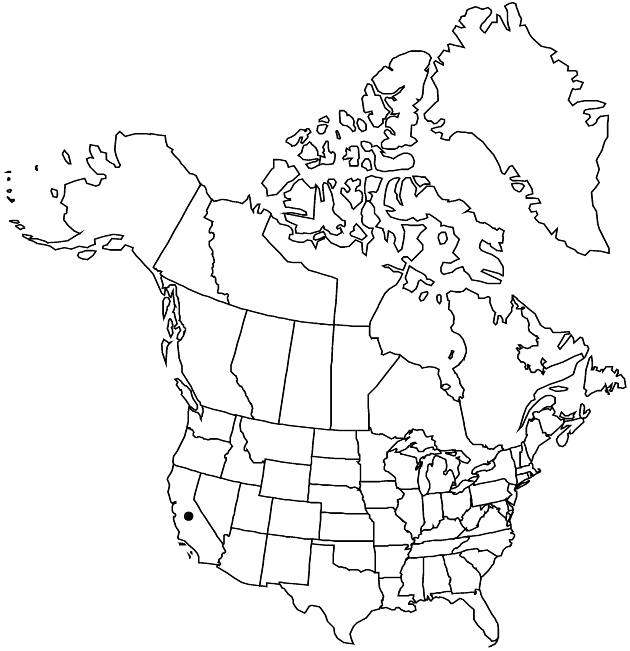Harmonia nutans
Novon 9: 464. 1999.
Plants 5–25 cm; proximal unbranched portions of primary stems shorter or longer than branches supporting heads. Leaves ± evenly distributed on stems. Heads usually reflexed in bud and fruit. Phyllaries 4–8, hirsute and/or hirtellous near folded edges. Ray florets 4–8; laminae 3–7 mm. Disc florets 7–30, bisexual, fertile. Ray cypselae not gibbous, beakless; pappi 0. Disc cypselae 2.3–4.5 mm; pappi of 9–11 lance-attenuate, fimbrillate scales 2–3.7 mm. 2n = 18.
Phenology: Flowering Apr–Jun.
Habitat: Rocky soils, openings in chaparral or woodlands
Elevation: 100–1000 m
Discussion
Of conservation concern.
Harmonia nutans occurs in the southern North Coast Ranges and northern San Francisco Bay area, mostly on volcanic substrates. Based on molecular phylogenetic data, H. nutans evidently represents the sister-group to the serpentine-endemic species of Harmonia (B. G. Baldwin 2001).
Selected References
None.
